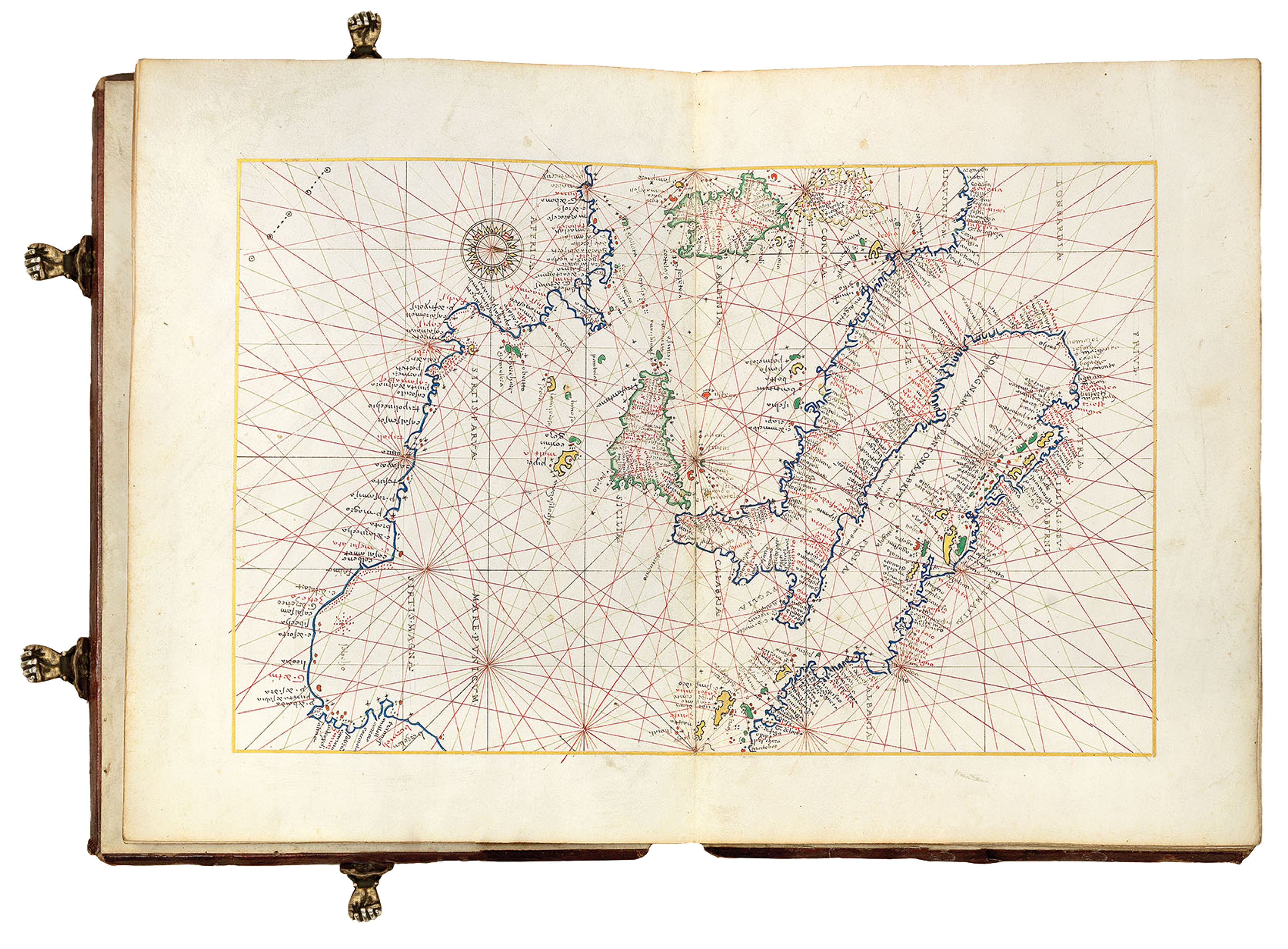Compass Rose
Back to people overviewAlso known as a wind rose, the compass rose was a central feature of nearly all early navigational charts. It indicates direction so that the reader can orientate themselves when reading the chart. These tools could be very simple, with only a single pointer indicating north. They could also be far more complex, indicating the directions of North, South, East and West. Compass roses were often highly decorative. Some mapmakers had signature designs unique to themselves. They derive from the invention of the magnetic compass. Plácido Caloiro e Oliva and Joan Oliva’s portolan charts include decorative compass roses.
